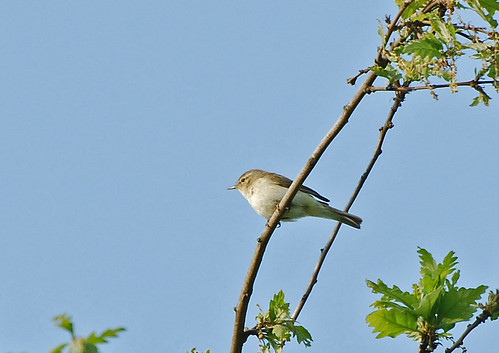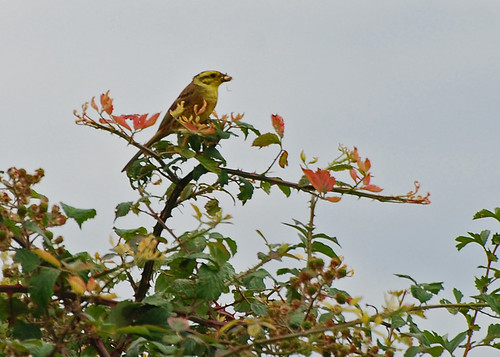First things first, a very happy new year to you all. I hope 2016 brings you peace and prosperity. Heading back into the depths of last year I spent a very cold morning at the end of November exploring Ouse Fen which is a great place for songbirds and water birds.
RSPB Ouse Fen is another collection of exhausted gravel pits which have created a series of lakes and been turned into a nature reserve. It’s part of ongoing extraction so new habitat is being created all the time and will all eventually become nature reserve, creating an enormous network of varied habitat. It’s located between Needingworth and Bluntisham near St Ives in Cambridgeshire.
The entrance onto the reserve is via a pathway across a bleak field leading to a sheltered path that’s lined with established hedges, and the hedges are always full of songbirds. On this trip it was as busy as ever and within a few metres I spotted a goldcrest just a few feet away and within a few seconds there were four of them. In my experience goldcrest are devilish difficult to get good photographs of, because like wrens, they are tiny and they flit around at high speed in the undergrowth. But this time I ramped up the ISO to 1000 which allowed a reasonable shutter speed of 1/320 s and got lucky:
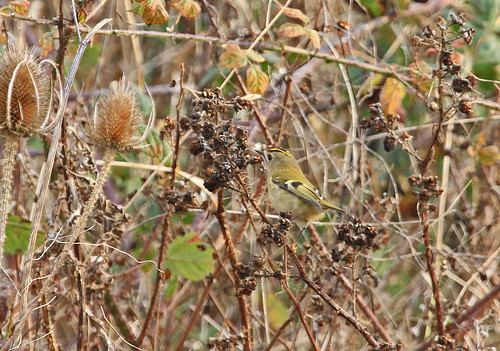 Goldcrest (Regulus regulus, Dansk: fuglekonge)
Goldcrest (Regulus regulus, Dansk: fuglekonge)
The Danish name translates as ‘bird king‘ I guess from his splendid golden crown, and it’s the smallest breeding bird in the UK, weighing in at 5-6g.
Despite its diminutive stature it’s conservation status is green and more than half a million territories were recorded in the UK in 2009. Hopefully it isn’t suffering too badly with climate change…
Another bird which was in good numbers on this trip was the bullfinch. When I was a kid it wasn’t too unusual to see bullfinch on the feeders in the garden. But after the 1970’s their numbers plummeted such that it was years before I saw one at all. But nowadays I see them fairly frequently in the countryside (never in the garden though) and they had 190,000 territories in 2009 in the UK, so they can’t be doing too badly and their conservation status is amber.
The female is striking but has fairly drab colours in the winter:
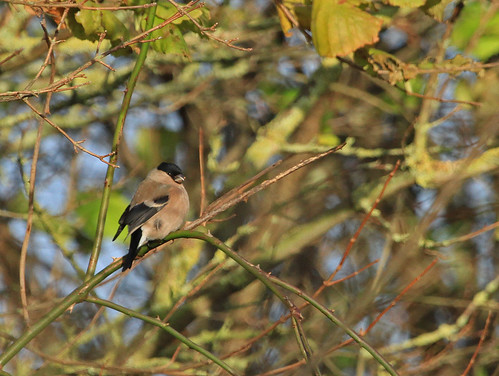 Bullfinch female (Pyrrhula pyrrhula, Dansk: dompap)
Bullfinch female (Pyrrhula pyrrhula, Dansk: dompap)
And the male is splendid even in winter with his peachy orange breast, black cap, grey back and white rump:
The bullfinch is a chunky finch with a beak to match which they use for cracking the seeds or stones from small fruit like cherries. They also eat shoots and consequently part of the reason for their downfall in the 1980’s was a result of falling foul of the fruit farmers. I love to see them and because of the relative scarcity of sightings and their skittish nature I’ve been waiting a long time to get a half decent photograph of one. And on this occasion I managed to get pictures of the male and the female. So I felt particularly smug on the way home!
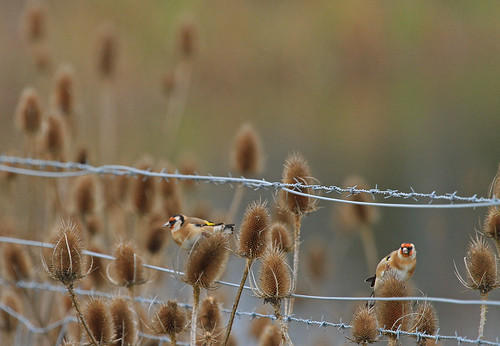 Goldfinches harvesting seeds from teasel heads (Carduelis carduelis, Dansk: stillits)
Goldfinches harvesting seeds from teasel heads (Carduelis carduelis, Dansk: stillits)
Ouse Fen is known for the prevalence of finches including redpoll, linnet and goldfinch all of which I’ve seen there before but this time it was only goldfinch that were on parade so I’ll try to get some redpoll and linnet pictures next time.





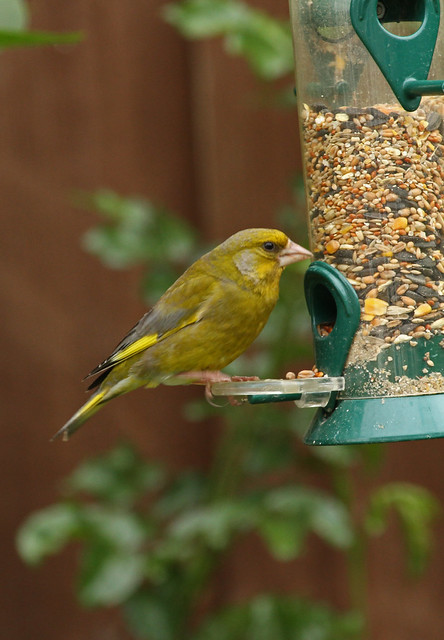




 Greenfinch (Carduelis chloris, Dansk: grønirisk)
Greenfinch (Carduelis chloris, Dansk: grønirisk)










